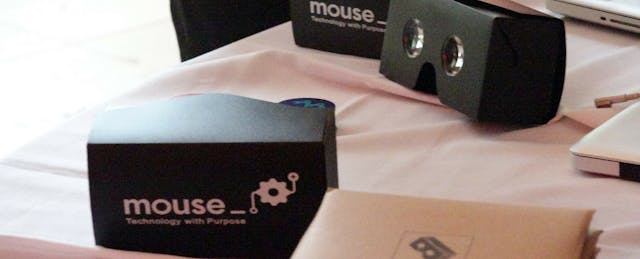Today Code/Interactive, a New York City-based nonprofit known for their work training coders and teacher professional development, announced its merger with another New York City nonprofit, Mouse, a youth technology and engineering organization, popular for its middle school makerspaces.
Code/Interactive, valued at approximately $1.5 million, offers Mouse, currently valued at about $2.5 million, a financially viable and operationally sound partnership, says Daniel Rabuzzi, Mouse’s executive director.
In an interview with EdSurge, Rabuzzi and Tom O’Connell, the interim executive director of Code/Interactive, explained how their merger would allow them to expand their offerings—combining the core concepts behind coding and making with hopes to scale creative computing throughout K-12 schools across the nation.
“Creative computing or creative technology is the future of pretty much every classroom, not only computer science classrooms,” O’Connell says. “So we're bringing in learning content from Mouse and educator training from the Code Interactive to open opportunities for all of us to engage with creative technology and computer science.”
The announcement is timely, coming after a $200 million-dollar grant announcement from the White House for computer science education, matched by another $300 million-dollar grant from private technology companies. Both Rabuzzi and O’Connell hope that this merger will put them in position to receive some of this funding and scale their operations, moving them from mid-sized to a large scale nonprofit.
“All of a sudden through state action and governors announcing big projects, computer science is something schools need to train their teachers for. So I think we're all waking up to this as a huge opportunity to expand our our our influence across the country and serve the needs of schools in a deep way,” says O’Connell. “We'd be way more able to manage operations, finance mechanisms, DOE grants or some of these larger opportunities as a merged entity.”
O’Connell also hopes that Mouse and Code/Interactive will be able to offer their users a few things they couldn’t give in the past. For example, O’Connell notes that his team did not have the bandwidth to provide users with artificial intelligence curricula for chatbots. After the Mouse merger, though, they hope to do just that. In addition, Mouse’s work primarily rested in the middle and high school space, while Code/Interactive focused on high school. The organizations look to scale their offerings from kindergarten to twelfth grade after the merger.
However, O’Connell notes the overall complexity of nonprofit mergers, saying the final consolidation is still tentative as the organizations await regulatory approval from the state attorney general.


